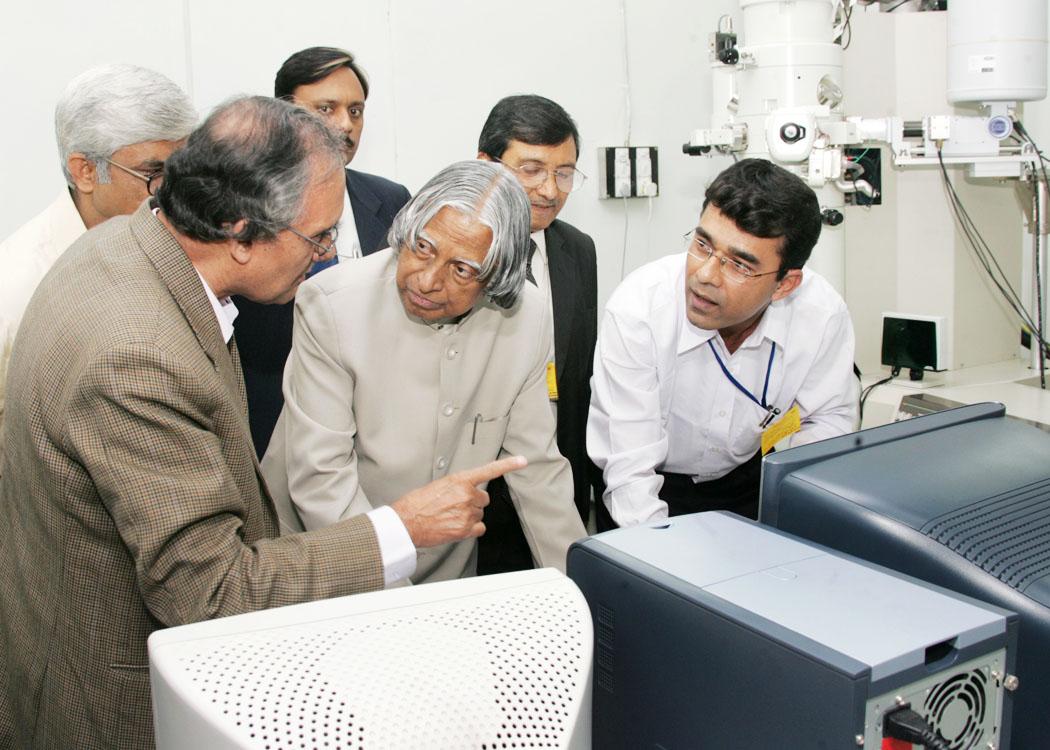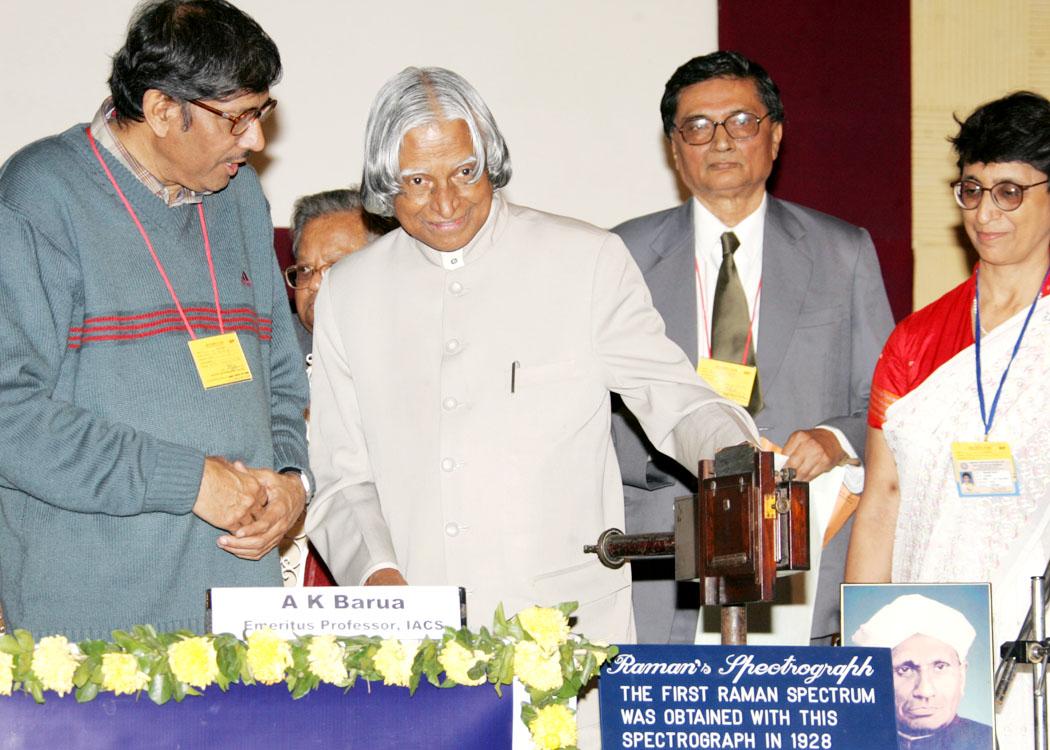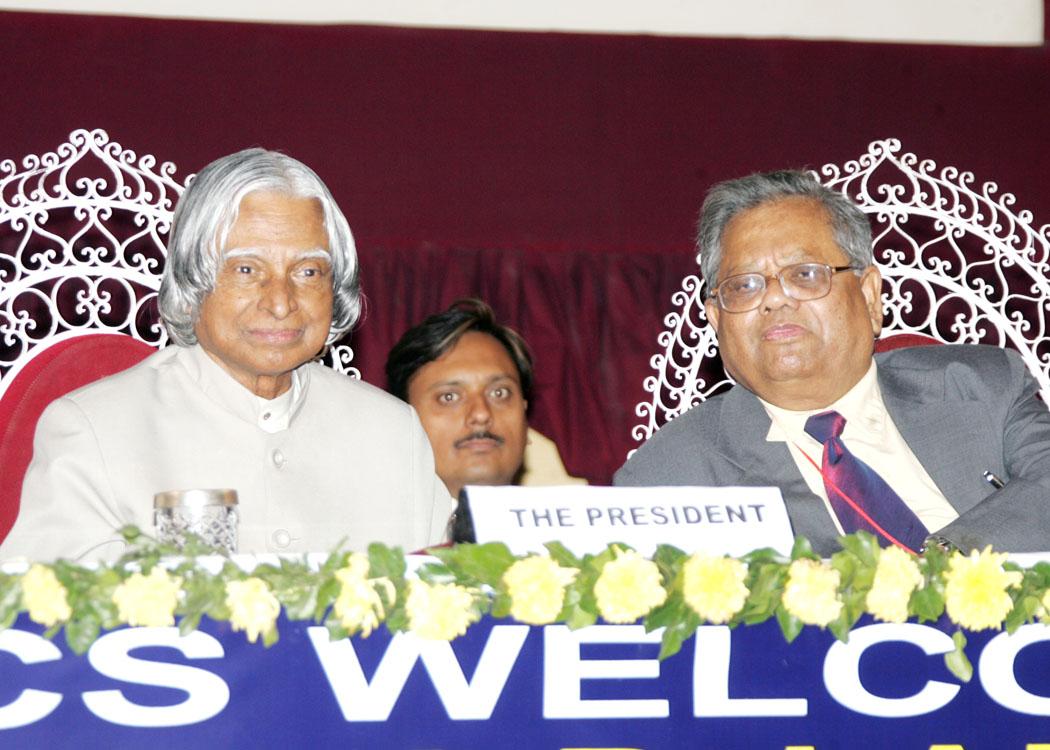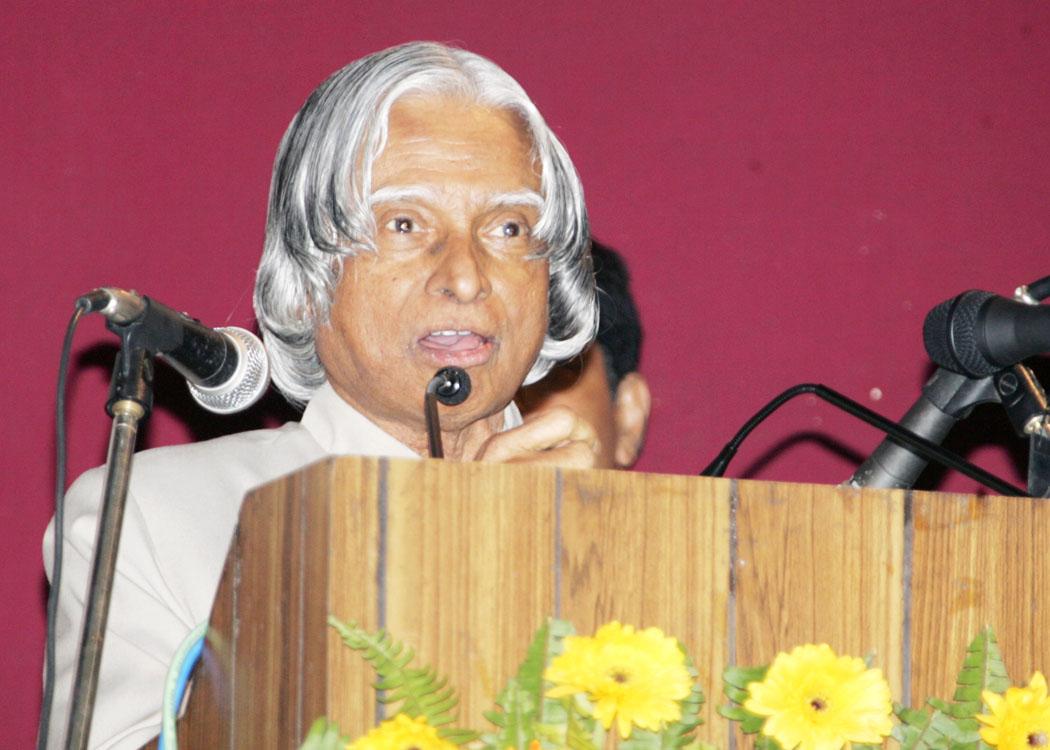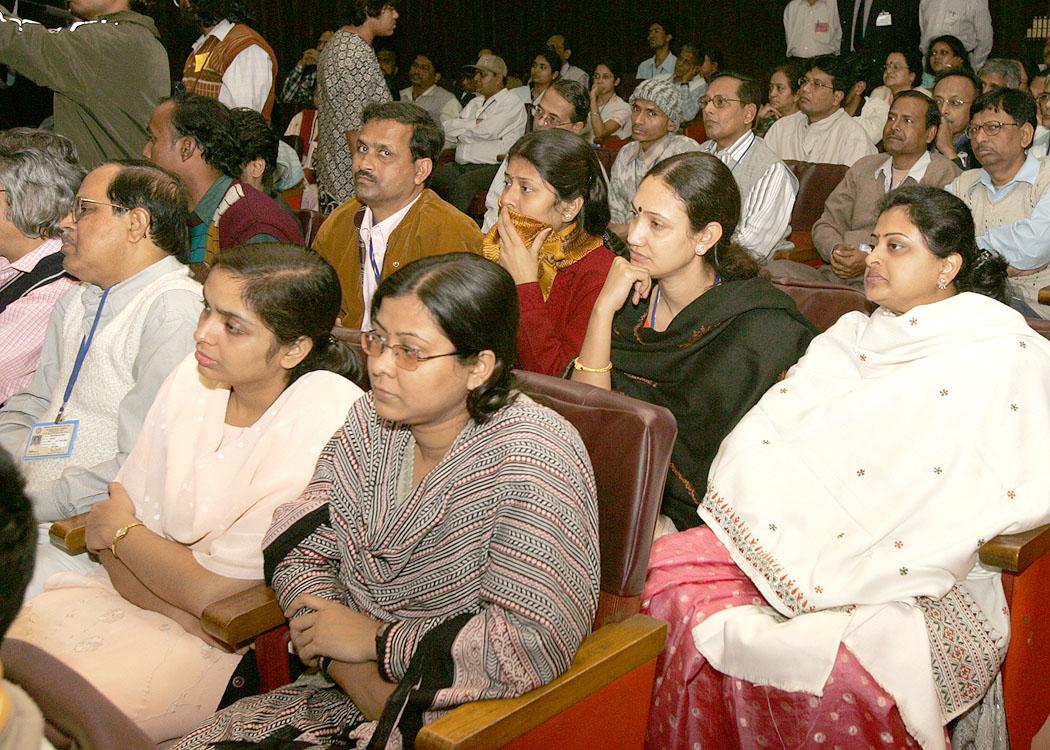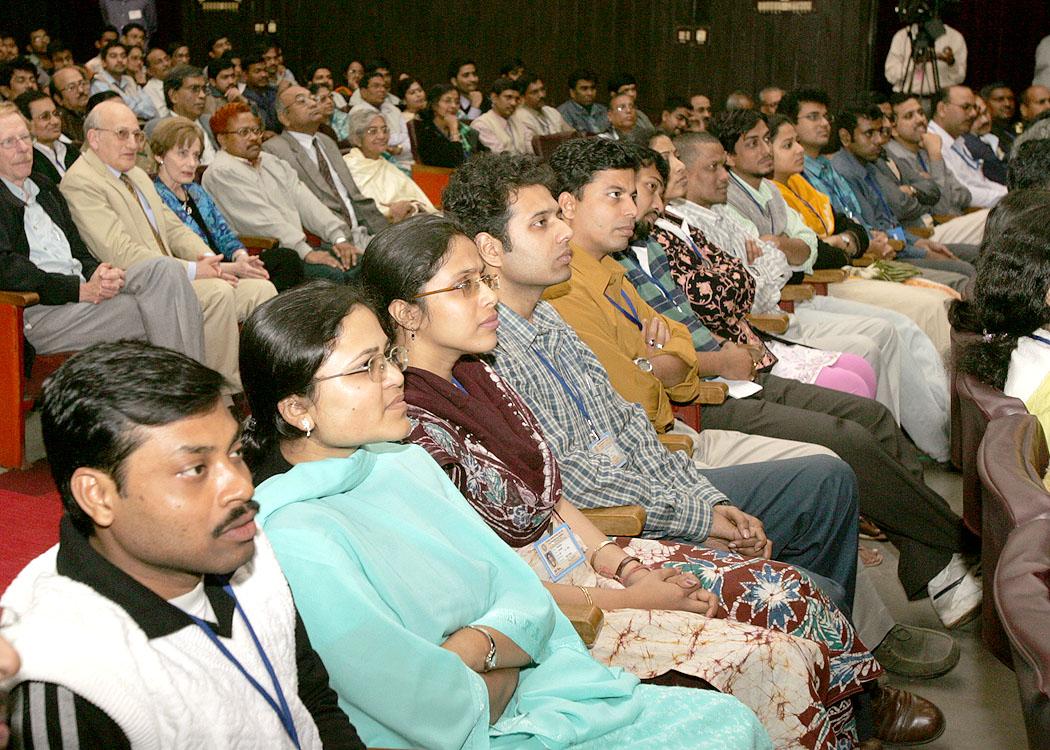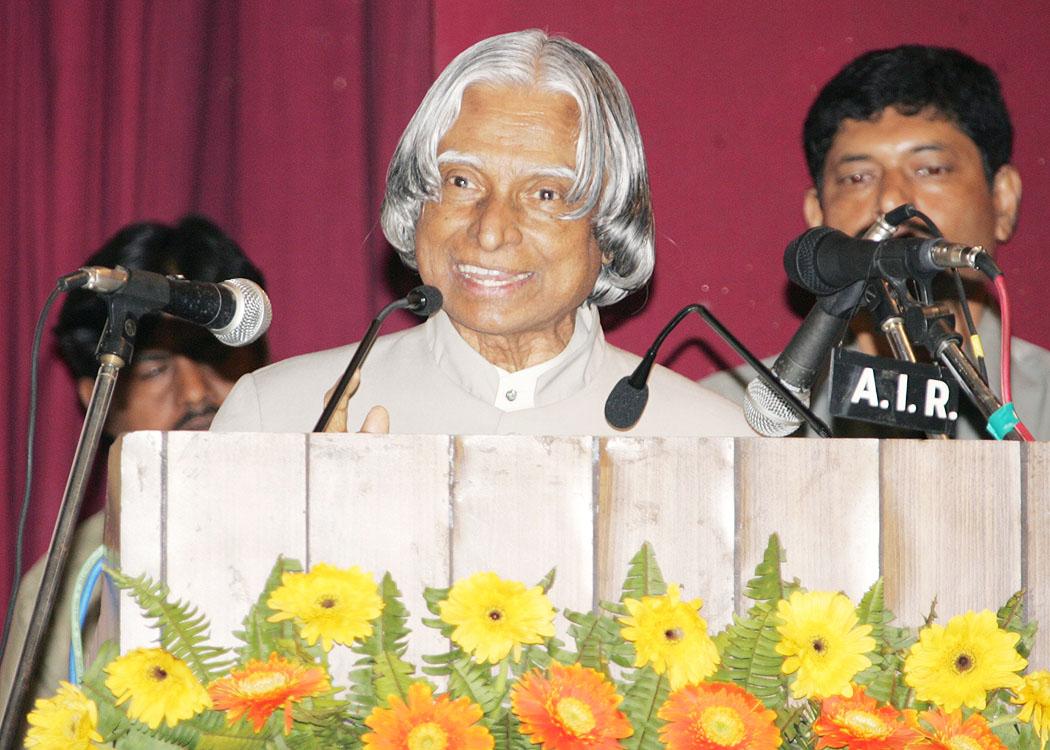Address At The Indian Association For The Cultivation Of Science, Kolkata
Kolkata : 17-01-2006
Frontiers of Science is Borderless
Past meets the present and creates the future.
I am delighted to visit Indian Association for the Cultivation of Science (IACS) and interact with the scientific teams. My greetings to the Director, Faculty Members, researchers, staff and other invitees. Your institution has been enriched by pioneers of Indian science such as Sir C.V. Raman and Prof Meghnad Saha. Of course you had a great founder with a vision, the person like Dr Mahendra Lal Sircar. I am in the place where past meets the present and creates the future. Our ability to sustain the spirit of enquiry in each and everyone of our younger generation can enable this country to make greater contributions to scientific research. Friends, when I entered into the Indian Association for the Cultivation of Science, a scene appears in front of me, Assistant Accountant General CV Raman coming out of the tram and see the golden letters written about the name of your institute and knocking the door. The door opens with a great smile of Dr Amrita Lal Sircar greets Raman, that was indeed a great beginning for Indian physics leading to Raman's achievements.
Raman Effect and its multi dimensions
I would like to share with you the contribution of Sir C.V. Raman who did most of his experimental work in this laboratory which is increasingly relevant today.
Raman Effect has continuously impacted every field of science. Its role in spectroscopy, medical diagnostics and material characterization had been phenomenal. The Raman Effect had been used in many new areas of science and the most recent being in the development of a continuous silicon laser. Instruments and techniques based on Raman Effect make a huge industry all over the world.
In a paper published in February 17, 2005 in Nature, Intel researchers disclosed the development of the first continuous wave all-silicon laser using the Raman Effect. They built the experimental device using the standard CMOS manufacturing processes.
Intel researchers incorporated a novel diode-like structure into the silicon cavity laser. This diode combined with the Raman Effect produces a continuous laser beam at a new wavelength. This breakthrough device could lead to many practical applications such as optical amplifiers, lasers, wavelength converters, and new kinds of high efficient optical devices. A low-cost all-silicon Raman laser could inspire innovation in the development of new medical sensors, and spectroscopy devices.
Over the next 5 to 10 years, the computing and communications industries would face increasing challenges to deliver more data and faster. Consumers will be downloading full-length movies, not just photos and music files. People will also require faster access to these large amounts of data. While microprocessors are projected to meet these future demands, the bandwidth of the interconnects needs to be increased to meet the speed of the microprocessors. With the new work of Intel using Raman Effect to produce continuous silicon laser, the material convergence will take place very soon and faster networks would emerge.
The spirit of scientific enquiry, which was encouraged by IACS since the days of Sir CV Raman and Dr Meghnad Saha should continue to exist for all generations. Thinking provides knowledge, knowledge empowers the person. Let me share my experience, with some examples, on the creative mind of the young.
Creative mind of the young
In May 2005, I participated in the award ceremony of Shankar's International Children's Competition at New Delhi. There, I found the visualization, through an essay, of a 13 year old girl named Aardhra Krishna on how the earth's civilization will look like around 3000 AD. In her imagination, the citizens are forced to migrate to Mars and have made Mars the home to a flourishing civilization. This advanced civilization, which was man made, comes suddenly under threat created by nature in the form of an asteroid of Jupiter. The asteroid from Jupiter orbit was coming towards Mars and Mars was in danger of extinction. The scientists on Mars come up with a very innovative plan of a barrage of nuclear cannons to attack the oncoming asteroid. The bombardment destroys the asteroid and the year 3000 sees a Martian civilization surviving from the fury of the nature by an innovative scientific application. What a wonderful scientific and technological thinking of the young mind? Would this have been possible at all without the availability of radio science which has created knowledge of the entire solar system? When I was admiring this imagination of the young student, a real space-time event took place, I would like to share with you the significance of it.
Later, on 4th July 2005, one important event took place in space. That was the impact of the NASA spacecraft called Deep Impact smashing into the comet Tempel-I, with enough force to create football stadium sized crater with a depth of a 14 storey building. The spacecraft was navigated by an Indian, Shyam Bhaskaran - the deep impact traveled 431 million kms in 172 days escaping from the earth orbit and intercepted the comet at a straight distance from earth at 134 million km. The comet was orbiting around the Sun every five and half years. This is a landmark in space exploration.
This event is important to divert in case of asteroids which may hit the earth in future. One such large asteroid 1950 AD is expected to hit the earth on March 16, 2880 AD. Like the "Deep Impact" many spacecrafts are required to be sent with high energy projectiles to divert or break the asteroid to move it out of the earth orbit.
Spotting young talent
These two experiences, one is young person's imagination about a planetary event and the other a scientific advancement related to space probe to a distant comet, lead me to highlight certain events which took place in Albert Einstein's life that brings out why young talents have to be recognised and nurtured, at the right time, by parents, teachers and experienced scientists.
Teachers influence : In Albert Einstein life, we find that his interest in science started early, beginning with his encounter with magnetism, which he called "the first miracle". He was given a compass by his father and Einstein was endlessly fascinated by the fact that invisible forces could make object move. This experience made a lasting impression on him. His interest in compasses was reinforced when he found a caring mentor to hone his ideas. At the age of 12, he experienced second wonder in a little book given by his mentor Max Talmud with Euclidean plain Geometry which he called "Holy Geometry Book". Einstein called this his "second miracle". Here Einstein made contact with the realm of pure thought. Without expensive laboratories or equipment, he could explore universal truth, limited only by the power of human mind. Mathematics became an endless source of pleasure to Einstein especially if intriguing puzzle and mysteries were involved.
Visualizing pictures: Einstein's father was in an electro chemical business. Being in the midst of electro magnetic contraptions awakened an intuitive understanding of electricity and magnetism in Albert Einstein. It sharpens his ability to develop graphic, physical pictures that would describe the laws of nature with uncanny accuracy. This trait, the ability to see everything in terms of physical pictures, would mark one of Einstein's great characteristics as a physicist.
Freedom to Learn : Though born in Germany, Einstein moved to Zurich Polytechnic Institute in Switzerland. The entry into the polytechnic did not require a high school diploma, just a passing grade on its tough entrance examination was sufficient. Einstein failed in the entrance examination but he did exceptionally well in the Maths and Physics section. That impressed the Principal and he promised to take him during the following year without an entrance test. The message we get from this experience is about having a flexible system of admission. Also an ability to spot the aptitude of the student in a particular subject and nourishing the talents. In addition, Einstein enjoyed the liberal atmosphere of the Swiss school.
Conclusion: Frontier of Science is borderless
Let me share with you certain problems that need integrated solution to enrich the life of the people of our planet. Scientists of Indian Association for the Cultivation of Science may like to consider the following five areas of research, if necessary, in collaboration with the International Scientific Community:
1. In the energy sector, increasing the solar photovoltaic cell efficiency from the existing 12 to 14% to 45 to 50% using the technologies such as nano material (CNT - Carbon Nano Tube) and nano electronics based on the computer simulation for the optimization of the parameters and performance is an important mission.
2. Proteomics is the study of all the proteins expressed by the genome of a cell. It is the logical extension of genomics. Proteomics helps to understand the basic biological processes critical to normal cellular functions as well as the development of diseases. It identifies the essential components of these processes and exploits these components as targets in the development of new methods to prevent or treat diseases. The proteomics programme is done nationally. The type of work involved is huge and challenging, and much bigger than the Human genome programme.
3. In many places in our planet, we experience severe earthquakes resulting in loss of life, loss of wealth and in some cases it destroys the decades of progress made by the country and its valuable civilizational heritage. India has earthquake problems periodically in certain regions. Recently, in our state of Jammu and Kashmir and the neighbouring country, there was an earthquake. US, Japan, Turkey, Iran and many other countries also suffer due to earthquakes. It is essential to forecast the earthquake using multiple parameters using precursors such as pre-shock conditions, electromagnetic phenomena prior to final rupture and Atmospheric/ ionospheric anomalies
4. Monsoon prediction worldwide is known. But accurate and timely prediction of onset of monsoon is a global research priority. Further, the quantum of rainfall in a particular area within a specified duration is not being determined by the present monsoon prediction system. Recent heavy rains in Mumbai, Chennai and Hyderabad and Katrina hurricane in US has created enormous loss of life and property. This brings out the necessity for global monsoon research for determining intensity and quantum of rain in a particular cloud condition. A mathematical model has to be evolved in predicting the quantum of rain for the particular cloud conditions. With this model, the researchers feel by deploying the new type of radar called Polarimetric radar, will provide the information for the particular cloud condition, how much rain will come in what period.
5. The last two centuries have seen rapid development of chemical age. The advancements made in material science and technology gave the impetus for both nuclear and biological age to flourish. Succession of these technology periods has involved progression from simpler materials to more complex forms of science and engineering. We are today at the convergence of Nano, Bio and Information technologies. This age, I feel will create historical revolution and India must become a pioneer to contribute towards this societal change through convergence of technologies.
Solutions within these five research areas; first relating to energy, second relating to healthcare, third relating to earthquake forecasting, fourth precision forecasting of monsoon and fifth relating to convergence of technologies for societal applications are vital for the growth of the society. The magnitude of the problems to be addressed in these research areas is such that it needs the pooling of best of researchers in multiple fields. In conclusion what can be the 21st century's science challenge to the scientists of IACS. I was reading two books of Michio Kaku. They are (i) Parallel Worlds: A Journey Through Creation, Higher Dimensions, and the Future of the Cosmos and (ii) Einstein's Cosmos: How Albert Einstein's Vision Transformed Our Understanding of Space and Time. Science will revolutionize the 21st century. Two important aspects come out. One, onset of knowing the basic laws of quantum mechanics, DNA and advanced computing science and second, learning the space time fully. Scientists will embark on mastering of space and time. Of course unified field theory, i.e. unification of generalized relativity and quantum theory.
My greetings to all the members of the Indian Association for the Cultivation of Science and my best wishes for success in their mission of making path breaking world class research relevant to national development.
May God bless you.

